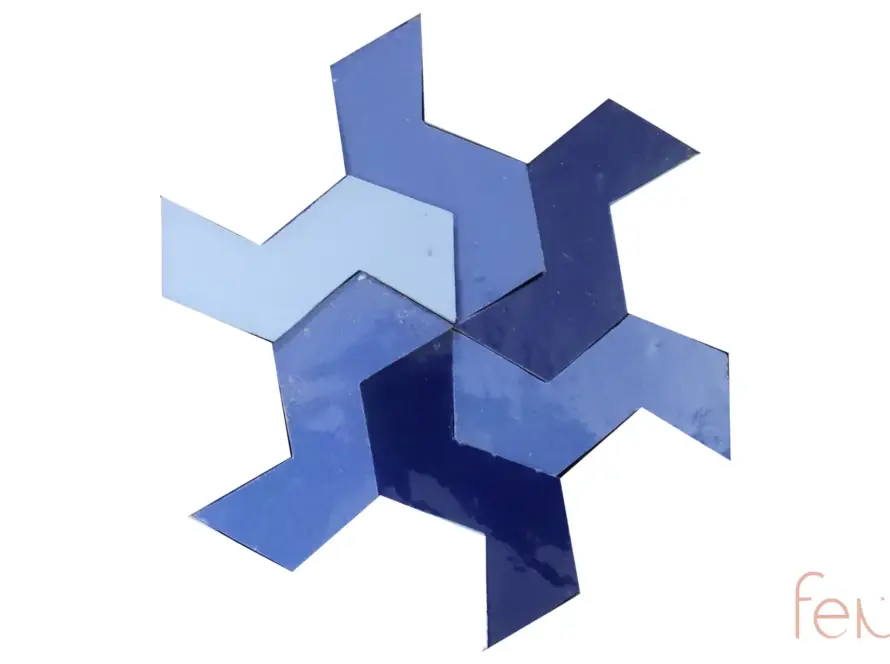The magic of zellige is born from the hand of the craftsman, the maâlem. In the heart of his workshop, where time seems to stand still, skilled hands, driven by a deep love for this ancestral art, knead the clay, coat the tiles with paint, arrange them in kilns, cut them to give them their final shape and finally assemble them into complex surfaces.
The first stage of the manufacturing process begins with the clay, a raw material extracted from the depths of the Fez earth. Subjected to the embrace of water, the clay is transformed into a supple paste, ready for shaping. A craftsman, the maâlem is also a true artist, an interpreter of the natural world, imprinting shapes and motifs that bear witness to the cultural richness of Morocco.
At the same time, in the eastern part of the Roman Empire, Byzantine mosaics, using repeated, two-dimensional motifs, created a “carpet” effect that would profoundly influence later Christian churches and Jewish synagogues. Byzantine mosaicists, famous for their work, were employed by the Arab Umayyad caliphate to decorate prestigious sites such as the Dome of the Rock in Jerusalem and the Great Mosque in Damascus, indicating a cultural and artistic exchange between Christian and Islamic civilizations.
In North Syria, Roman and Byzantine mosaics show a predominance of geometric motifs from the earliest examples dating from the 4th to the early 5th century. Animal motifs appear in later examples, from the 5th to 6th centuries, demonstrating a stylistic and thematic variety in the region’s mosaic traditions, which may have influenced the later development of ceramics and mosaics in the Islamic world, including zellige in Morocco.
The earliest signs of zellige art can be found in Al Andalus and the Maghreb, with evidence suggesting that the technique may have been developed as early as the mid-10th century in Tunisia, under the Fatimid dynasty, and later during the Zirid period. Zellige was then adopted and perfected in Morocco, where it became a major component of Islamic architecture and decoration, notably with the emergence of the Marinid dynasty in the 14th century. This dynasty and that of the Nasrids greatly contributed to the generalization and enrichment of zellige art, incorporating complex geometric motifs and a more varied palette of colors, notably in Tlemcen in Algeria and in the Moroccan cities of Fez and Meknes.
In the 14th century, under the Marinid dynasty, zellige underwent remarkable development. Moroccan craftsmen perfected the technique, creating more complex patterns and using a wider range of colors. They discovered the technique of double-firing clay tiles and the use of polychrome glazes, making zellige a prized decorative element in palaces, mosques and mausoleums. The Marinids saw zellige as an expression of their cultural identity, which led to the introduction of new cutting techniques to create even more elaborate designs.
Zellige reached its apogee in the 16th century under the Saadian dynasty. This period was marked by the extensive use of zellige in the decoration of tombs and religious buildings, where geometric patterns and vibrant colors created sumptuous settings.


1 Comment
code of destiny
I am extremely impressed together with your writing talents and also with the format in your weblog. Is this a paid theme or did you modify it your self? Either way stay up the excellent quality writing, it is uncommon to peer a nice blog like this one nowadays!